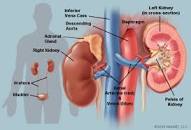
Recently Diagnosed or Relapsed? Stop Looking For a Miracle Cure, and Use Evidence-Based Therapies To Enhance Your Treatment and Prolong Your Remission
Multiple Myeloma an incurable disease, but I have spent the last 25 years in remission using a blend of conventional oncology and evidence-based nutrition, supplementation, and lifestyle therapies from peer-reviewed studies that your oncologist probably hasn't told you about.
Click the orange button to the right to learn more about what you can start doing today.
- You are here:
- Home »
- Blog »
- Multiple Myeloma »
- Light Chain Myeloma- Evidence-based, Non-Toxic Therapies
Light Chain Myeloma- Evidence-based, Non-Toxic Therapies

“A literature review (Light Chain Multiple Myeloma) revealed bone pain and renal failure as the most common initial sign and symptoms while…”
Dear David- Are you familiar with light chain multiple myeloma (LCMM)? It is one of the types of aggressive MM which about 15% of MM patients have.
While the evidence-based nutrition, supplementation and lifestyle therapies appear to benefit MM patients, will the described evidence-based therapies help those who have a free light chain disease such as aggressive light chains myeloma? Thank you for your response. Donald
Hi Donald,
Yes, I am familiar with light chain multiple myeloma (LCMM). The article linked and excerpted below does a pretty good job of explaining this type of MM.
Three replies to your question “will the described evidence-based therapies help those who have a free light chain disease such as aggressive light chain multiple myeloma?”
First, I don’t know. The studies that cite the benefit of, for example, curcumin, as being both cytotoxic to MM as well as enhancing both Velcade and Revlimid don’t specify different types of MM.
Secondly, my experience is that light chain MM damages the kidney by depositing light chain proteins IN the kidney. Therefore, I think the benefit of the therapy is dependent on how it interacts with the patient’s kidney.
For example, curcumin, omega-3 fish oil and black seed oil all enhance kidney health. Exercise, according to research, enhances kidney health. It seems to me that it is logical to think that these therapies, in addition to managing MM, will also benefit LCMM by virtue of their benefit to kidney health.
My third reply is that conventional oncology focuses exclusively on chemotherapy to manage MM. I think this is a myopic approach, especially when treating LCMM patients. I think that all MM patients who exhibit any form of kidney involvement should undergo evidence-based, non-toxic therapies shown to promote kidney health.
Let me know if you have any questions.
Thanks,
- MM Survivor
- MM Cancer Coach
- Director PeopleBeatingCancer
Recommended Reading:
An Overview of Light Chain Multiple Myeloma: Clinical Characteristics and Rarities, Management Strategies, and Disease Monitoring
- better overall response rate (95.5% vs. 60%),
- progression-free survival (PFS) (25% vs. 9% at two years), and
- overall survival (OS) (24% vs. 9% at five years).

